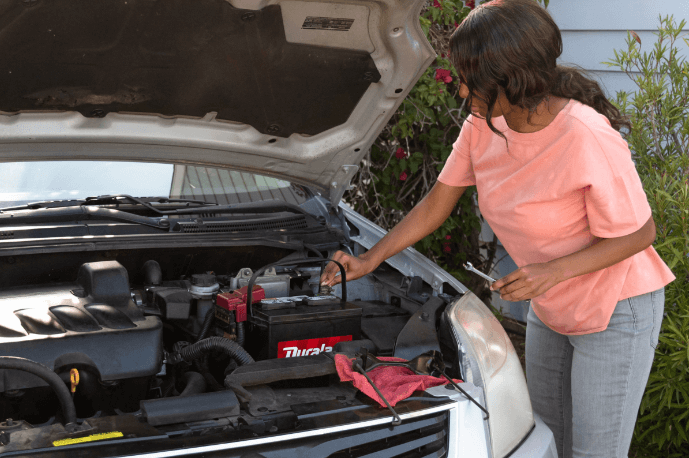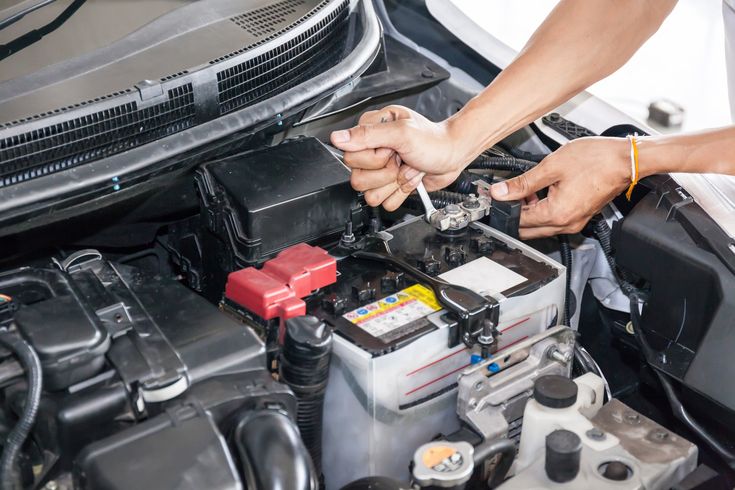How to Disconnect A Car Battery?
Every car owner will face the task of disconnecting and replacing their car battery several times. While you can easily use the services of a garage, there are days you will need to save yourself. Therefore, it is important to learn basic things such as how to disconnect a car battery and install it back. Erroneous disconnection or connection can permanently destroy the battery, blow fuses, impair the computer modules of the car, and severely injure you.
Whether you want to disconnect the car battery for cleaning or maintenance, or you need to replace it altogether, this article will help you to safely disconnect, remove, and mount a car battery. Continue reading!
When Do You Need to Disconnect a Car Battery?

Car batteries are not permanent fixtures in the car. They need to be removed after a while for various reasons such as:
If you are planning for long-term storage - It is recommended that you disconnect the battery if your car will not be in use for a long time. It keeps the battery from draining.
Basic car repairs - Also, you must disconnect the battery from the car if you are doing car repairs, especially when touching the electrical components.
When replacing the battery - The old battery must make room for a new battery. Thus another reason why you should disconnect the battery.
When cleaning corrosion accumulation on the terminals - Before cleaning the terminals and cables, you should disconnect the battery.
How to Disconnect a Car Battery: Step-by-Step Guide
Disconnecting the battery from the car is straightforward. However, before you begin, ensure you have the right tools. Tools that are essential for disconnecting a car battery include:
Protective kit - Your safety when handling a car battery is a priority. Shield your eyes with goggles and wear gloves to keep your skin safe from acid spills.
A wrench - A wrench is an easy-to-use tool to help you loosen bolts or screws that are holding the battery and cables.
Baking soda and water - This is a safe and effective solution for cleaning corrosion buildup on the battery. Alternatively, there are commercial products specially designed for battery cleaning.
These are key items to help you safely and easily unplug a battery car. Let’s learn how to disconnect the car battery step by step.
Turn off the Car Engine
Before you dismount the battery, turn off the car engine as well as other electrical components of your car. Do not attempt to disconnect the battery while the car engine is still running. It will cause damage to your car and you might get injured.
Identify the Battery Terminals
Open the car hood and identify the battery position. Also, identify both terminals. The negative terminal has a (-) symbol, while the positive has a (+) symbol.
Disconnect the Terminals
The next step in learning how to unplug a car battery is disconnecting the terminals. At all times, disconnect the negative terminal first. This is to prevent risks of short-circuit. You can proceed to disconnect the terminal.
Use the wrench to help you loosen the bolts that secure the terminals. Gently lift off the cables from the battery and keep them at a safe distance away from the terminals.
Remove the Battery Harness
If the battery is secured in its compartment using a harness and bolts, use a wrench to loosen the nuts for easy removal of the battery.
Remove the Battery
Now, you can safely lift up the battery from its compartment. Beware of the car battery weight as you pull it out to avoid getting injured. Always prioritize your safety when removing or handling car batteries. When removing the battery from your car, avoid the following mistakes:
- Incorrect Use of Tools - Ensure you have the right wrench size. If you use the wrong size wrench, it will make the process hard and will take up more of your time.
- Removing the Positive Terminal before the Negative Terminal- At all times, always remember to unplug the negative terminal first. Doing otherwise might result in a short circuit and cause a spark which can lead to a fire.
- Not Cleaning the Corrosion on Terminals and Cables - You must clean the corrosion buildup before reinstalling the battery.
- Not Observing Safety Measures - Acid leaks from the battery can irritate or burn your eyes and skin. Before you start dealing with the battery, put on safety glasses and gloves.
How to Reconnect a Car Battery?
Now you know how to disconnect the car battery, do you know how to rewire the battery back into the car? The process is just a reverse of how to unplug the battery car. Follow the following steps to install the battery back into the car successfully.

Clean the Battery Terminals and Cables
Clean any corrosion buildup on the terminals and on the cables, before installing the battery back into the car.
Gently Place the battery back in its tray
Keep the battery securely in its section, while ensuring it does not shift.
Connect the Cables
When reconnecting, you should always start with the positive terminal. Use the wrench to tighten the positive cable to the positive terminal. Next, connect the negative cable to the negative terminal.
Ensure Everything is Secured Well
Don’t leave yet. Check one more time and ensure everything is well secured in its place. The battery should perfectly rest on its tray and the cables should be tightly secured.
Reset the Electrical Components
Removing and reinstalling the battery will reset some of the infotainment and clock. Set the correct time and you are done. Also, your car should be able to restart without any issues.
Start the Engine
After the reinstallation of the battery, start the engine to check if your battery is working well.
Considerations before Disconnecting
Before you start the process of disconnecting the car battery you should consider the following factors.
- Safety - You must prioritize your safety when handling the car battery. Improper handling of the battery, especially when connecting, disconnecting, and cleaning can cause severe body injuries. Also, wrong handling can permanently damage the battery, the electronic system of the car, and blow fuses.
- Type of the Battery - Understand various aspects and specifications of your battery by reading the user manual. If you install an undersized battery, it may not adequately power your car engine and other electrical components in the car.
- Use the Right Tools - Ensure you have protective clothing such as gloves, goggles, and aprons when dealing with the battery. Other tools you need to complete the job include the wrench.
Problems You Might Experience After Disconnecting Car Battery
You might experience a few unexpected challenges after disconnecting your car’s battery. Detaching the battery from the car might erase the keep-alive memory and important learned data which is crucial for some modules to function properly.
Some of these potential issues include:
- Problems with starting the car
- Loss of car air conditioning
- Drivability issues
- Damaged electronic modules
- Malfunctioning power fixtures such as windows, sunroof, and seats
- Faulty car lights
Before disconnecting your car battery, here are key things you must understand. Do not disconnect the battery from the car without first monitoring its voltage. Failure to monitor may cause the engine to malfunction.
If the voltage is too high or too low, it might cause the air and fuel to mix thus becoming too lean or too rich, thus resulting in abnormal transmission. Also, affected modules can cause the airbag system or ABS to stop working.
Another thing you must know before disconnecting the car battery is that it might affect the climate control module. Therefore, upon reinstating the battery, you must reprogram the settings so that the AC can function properly.
Additionally, the body control module might reset, thus disrupting the smooth operation of power accessories such as electronic suspension, memory seats, sunroof, and windows. In some car models, battery disconnection might disable or reset the anti-theft system, which causes the engine to not start. If you are replacing a new battery in your car, you will need to enter new battery information into the PCM using a scan tool.
Conclusion
Knowing how to unplug a car battery and install it back is basic for every car owner. The above-discussed steps are general knowledge. Therefore, you should refer to the user manual while disconnecting or connecting your car battery. Note that it is safer and more efficient to let a professional handle all battery-related issues for you if you are unsure of how to deal with them.
FAQs
1. What battery terminal should I disconnect first?
You must disconnect the negative terminal first. If you are installing the battery to the car, the positive terminal should come first.
2. How long will my car battery remain useful after disconnecting it?
For most car batteries, the maximum lasting time is six months. Remember to occasionally charge your disconnected car battery.
3. How can I prevent my disconnected battery from dying prematurely?
To keep your battery alive while in storage, do the following:
- Keep the batter clean and in a cool place. Heat causes the car battery to deteriorate faster. Also, remember to keep your battery clean, especially the terminals.
- Reduce the car battery energy drain by turning off some features such as the radio and navigation system.
- Keep charging your battery regularly even if it is not in use.
- Avoid driving short distances as it affects your battery lifespan.
4. What will happen if I disconnect the positive terminal before the negative terminal?
One of the reasons why it is recommended to first disconnect the negative terminal first is to allow the battery to separate from the chassis. If you are using a wrench and disconnect the positive terminal, the wrench can accidentally touch other parts of the car leading to blowing off the fuses. This can damage parts of the car and also the battery.











